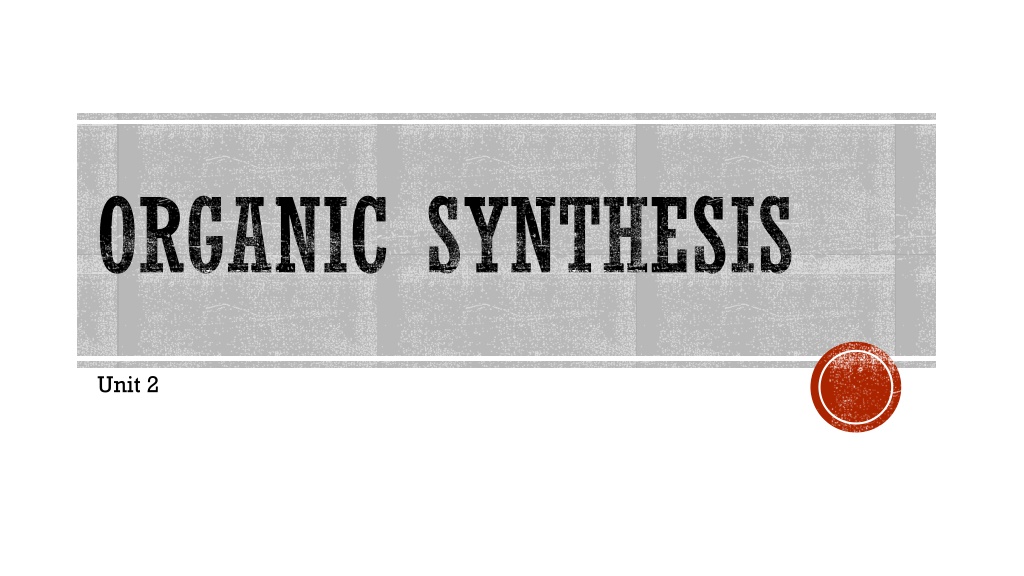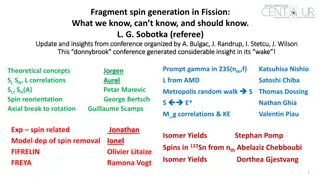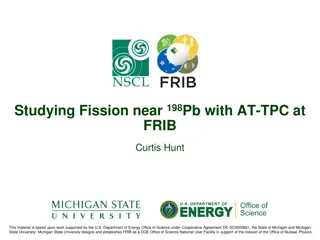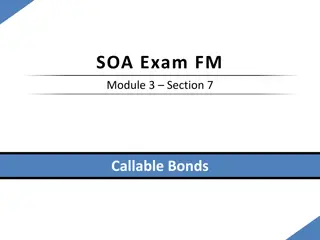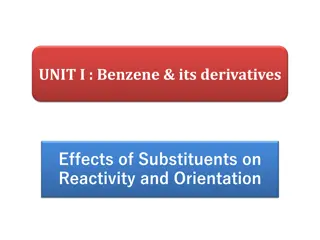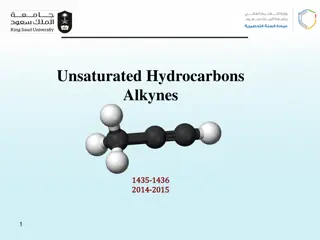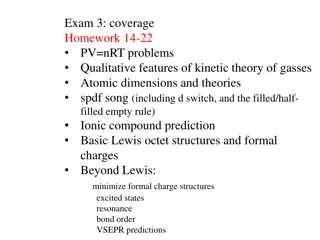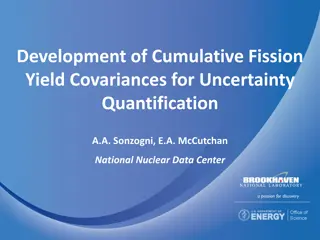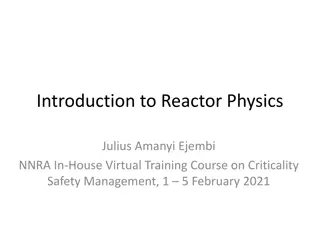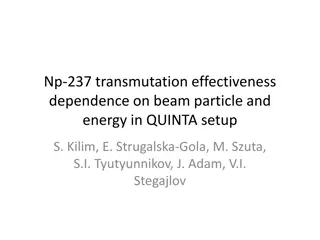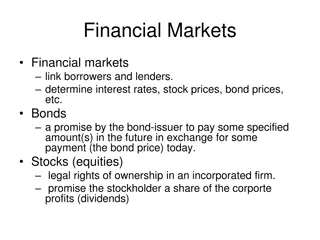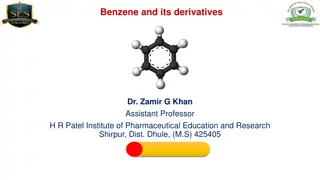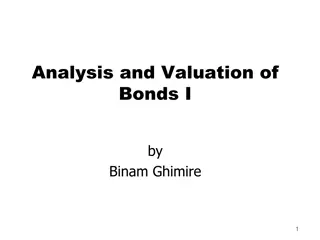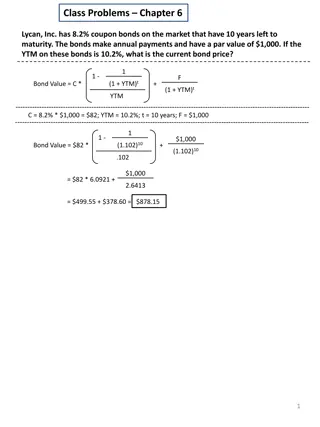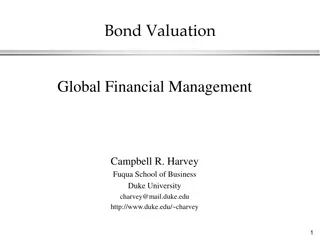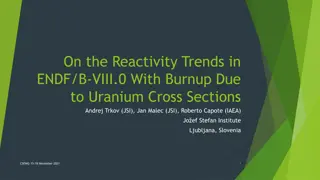Understanding Alkane Reactivity: Bond Fission and Halogenation
Alkanes, known for their low reactivity, can undergo halogenation in the presence of sunlight or UV light to form halogenoalkanes. This reaction is significant due to the non-polar nature of alkane bonds and highlights a rare reactivity pathway for these compounds. The process of bond fission, particularly with halogens, demonstrates a fundamental aspect of organic synthesis and the conversion of alkanes into more functionalized compounds.
Download Presentation

Please find below an Image/Link to download the presentation.
The content on the website is provided AS IS for your information and personal use only. It may not be sold, licensed, or shared on other websites without obtaining consent from the author. Download presentation by click this link. If you encounter any issues during the download, it is possible that the publisher has removed the file from their server.
E N D
Presentation Transcript
ORGANIC SYNTHESIS Unit 2
Alkanes are not particularly reactive due to the non-polar nature of their bonds. They can, however, react with halogens in the presence of sunlight or UV light where halogenoalkanes are produced along with steamy fumes of the corresponding hydrogen halide. In this reaction an atom of hydrogen has been replaced with an atom of a halogen, and is an example of a substitution reaction.
This substitution reaction is thought to occur by a chain reaction which has 3 main steps: Propagation, Initiation and Termination.
BOND BREAKING CH4+ Cl2 CH3Cl + HCl This reaction will not take place in the dark, it requires UV light to provide energy to break the Cl-Cl bond. This splits the chlorine molecules into chlorine atoms. Cl-Cl Cl + Cl (the dot represents an unpaired electron). This type of bond breaking is known as homolytic fission and usually occurs when the bond is non-polar or very slightly polar.
In homolytic bond fission one electron from the bond goes to one atom while the other electron goes to the other atom. Atoms with unpaired electrons are known as radicals which are incredibly unstable and are therefore incredibly reactive. The initiation step in a chain reaction produces radicals.
HETEROLYTIC BOND FISSION If a bond were to split unevenly, ions are formed. The atom that got both electrons would be ve, the other +ve. This is called heterolytic bond fission and will be favoured when the bond is polar. Reactions proceeding via heterolytic bond fission tend to produce far fewer products and are therefore better suited for synthesis.
ELECTROPHILES AND NUCLEOPHILES
In reactions involving heterolytic bond fission, attacking groups are classified as nucleophiles or electrophiles . Electrophiles are chemical species that are electron deficient and are therefore electron loving species. Electrophiles are molecules or positively charged ions which are capable of accepting an electron pair. They will seek out electron rich sites in organic molecules. Examples include NO2+and SO3H+
Nucleophiles are chemical species that are rich in electrons and are electron donating species. Nucleophiles are molecules or negatively charged ions which have at least one lone pair of electrons that they can donate and form dative bonds. They will seek out electron-deficient sites in organic molecules. Examples include H2O, NH3and halide ions.
CURLY ARROW NOTATION Double headed curly arrows are used to indicate the movement of electron pairs in a reaction. The tail of the arrow shows where the electrons originate from and the head shows where they end up. An arrow starting at the middle of a covalent bond indicates that heterolytic bond fission is occurring. When an arrow is drawn with the head pointing to the space between two atoms, this indicates that a covalent bond will be formed between these two atoms.
A single headed curly arrow indicates the movement of a single electron. These are useful in discussions about radical chemistry mechanisms.
Haloalkanes can be regarded as substituted alkanes where one or more of the hydrogen atoms have ben replaced with a halogen atom. In naming haloalkanes the halogen atoms are treated as branches and naming is done in the same way as for branched alkanes.
NAME THIS HALOALKANE 2-bromo-2-chloro-1,1,1-trifluoroethane Remember, branches are named in alphabetical order.
MONOHALOALKANES Have three different structural types which are primary, secondary and tertiary. These are determined by the number of alkyl groups (R) attached to the carbon atom directly attached to the halogen atom (X).
Due to the polar nature of the Carbon-Halogen bond, haloalkanes are susceptible to nucleophilic attack. The presence of the slight positive charge on the carbon atom makes haloalkanes susceptible to nucleophilic attack.
The nucleophile donates a pair of electrons forming a bond with the carbon atom of the C-X bond. The halogen is thrown out and substituted by the nucleophile. The mechanism for this will be covered later.
NUCLEOPHILIC SUBSTITUTIONS OF MONOHALOALKANES
MAKING ALCOHOLS Reactions of monohaloalkanes with alkalis produce alcohols. A solution of aqueous KOH or NaOH is used.
MAKING ETHERS Reactions with alcoholic potassium alkoxides (Potassium methoxide in methanol CH3OK) produces ethers.
MAKING NITRILES Reactions of ethanolic potassium cyanide or sodium cyanide (KCN or NaCN in ethanol) produces nitriles.
MAKING CARBOXYLIC ACIDS The end nitrile contains one more carbon than the original haloalkane. This is very useful in synthetic organic chemistry as a way of increasing the chain length of an organic compound. The nitrile can be converted into the corresponding carboxylic acid through acid hydrolysis.
ELIMINATION TO FORM ALKENES Monohaloalkanes can undergo elimination reactions to form alkenes. This is achieved by heating the monohaloalkane under reflux with ethanolic potassium or sodium hydroxide.
In this reaction a hydrogen halide is removed from the original monohaloalkane and for some it can result in two different alkenes being produced. This is due to the availability of more than one H atom that can be removed in the formation of the hydrogen halide. For example, 2-chlorobutane can result in but-1-ene and but-2-ene, of which but-2-ene is the major product.
JUST BECAUSE I KNEW ONE OF YOU WOULD ASK Zaitsev's rule "The alkene formed in greatest amount is the one that corresponds to removal of the hydrogen from the -carbon having the fewest hydrogen substituents." For example, when 2-iodobutane is treated with alcoholic KOH, but-2-ene is the major product and but-1- ene is the minor product. A general example of Zaitsev's rule.
DONT LEARN THE PREVIOUS SLIDE!!!
SN1 AND SN2 REACTIONS
Haloalkanes will undergo nucleophilic substitution by one of two different reaction mechanisms, SN1 or SN2.
SN1 REACTION MECHANISM A kinetic study of the reaction between 2-bromo- methylpropane (tertiary haloalkane) and the nucleophile OH-shows it has the rate equation rate=k[(CH3)3CBr]. This means it is first order with respect to the haloalkane implying the rate determining step can only involve the haloalkane. It is a two-step process.
SN2 MECHANISM A kinetic study of the reaction of bromoethane (primary haloalkane) and the nucleophile OH-has the rate equation rate=k[CH3CH2Br][OH-]. This means it is first order with respect to both the haloalkane and the hydroxide ion implying the rate determining step should involve both these species. This is a one-step process.
HOW DO YOU KNOW WHICH REACTION MECHANISM (SN1 OR SN2) A HALOALKANE WILL UNDERGO? You need to look at what type of haloalkane primary, secondary or tertiary you are dealing with. In the SN1 reaction a carbocation intermediate is formed which could be a primary, secondary or tertiary carbocation but since alkyl groups are electron donating the tertiary carbocation will be the most stable. Tertiary haloalkanes are the most likely and primary haloalkanes the least likely to proceed by a SN1 reaction mechanism.
In a SN2 reaction the OH-nucleophile attacks the carbon atom of the carbon-halogen bond from the side opposite to the halogen atom. In the case of tertiary haloalkanes that position is most likely to be hindered by three bulky alkyl groups. Tertiary haloalkanes are least likely and primary haloalkanes most likely to proceed by a SN2 reaction mechanism.
PROPERTIES OF ALCOHOLS As the chain length of alcohols increase with the addition of a CH2 unit between each progressive member their boiling points show a progressive increase. However, if we compare the boiling point of an alcohol to the boiling point of an alkane of similar relative formula mass and shape we can see that they are considerably higher. This is due to the presence of the polar hydroxyl (OH) group in the alcohol molecule allowing hydrogen bonding to be set up between the individual molecules. This is shown in the diagram below.
Between the alkane molecule of similar relative formula mass and shape only London dispersion forces are found and since hydrogen bonds are stronger extra energy is required to break them giving a reason for the higher boiling point of alcohols. Ethane is the alkane closest to methanol in terms of relative formula mass (methanol 32 g and ethane 30 g). Only London dispersion forces are found between individual molecules of ethane. The boiling point of methanol is 64.7 C and the boiling point of ethane is -89 C showing the increased effect that hydrogen bonding has on the boiling point of methanol.
There is also a graduated decrease in the solubilites of alcohols in water as the chain length of the alcohol increases. Lower chain length alcohols (methanol, ethanol and propan-1-ol) are completely soluble in water (miscible with water) but alcohols such as heptan-1- ol and other higher chain length alcohols are insoluble in water. The smaller chain alcohols are soluble in water as the energy released in forming hydrogen bonds between the alcohol and water molecules is enough to break the hydrogen bonds between the water molecules. By the time you reach heptan-1-ol the large non-polar hydrocarbon part of the molecule disrupts the hydrogen bonding ability of the water with the hydroxyl, hence reducing solubility in water.
PREPARATIONS OF ALCOHOLS Alcohols can be prepared by two different reactions: a) Heating haloalkanes under reflux with aqueous sodium/potassium hydroxide by nucleophilic substitution (discussed earlier). b) Acid catalysed hydrolysis of alkenes described below. Alkenes undergo addition reactions with water to form alcohols. This reaction is an acid catalysed hydration proceeding through a carbocation intermediate.
STEP 1 The hydrogen ion of the acid catalyst is an electrophile and the electrons of the double bond in the alkene (electron rich) attack the hydrogen ion forming a carbocation.
STEP 2 The carbocation undergoes rapid nucleophilic attack by a water molecule to give a protonated alcohol (alcohol with a hydrogen ion attached).
STEP 3 Formation of the alcohol propan-2-ol. The protonated propan-2-ol is a strong acid and readily loses a proton to give propan-2-ol the final product.
